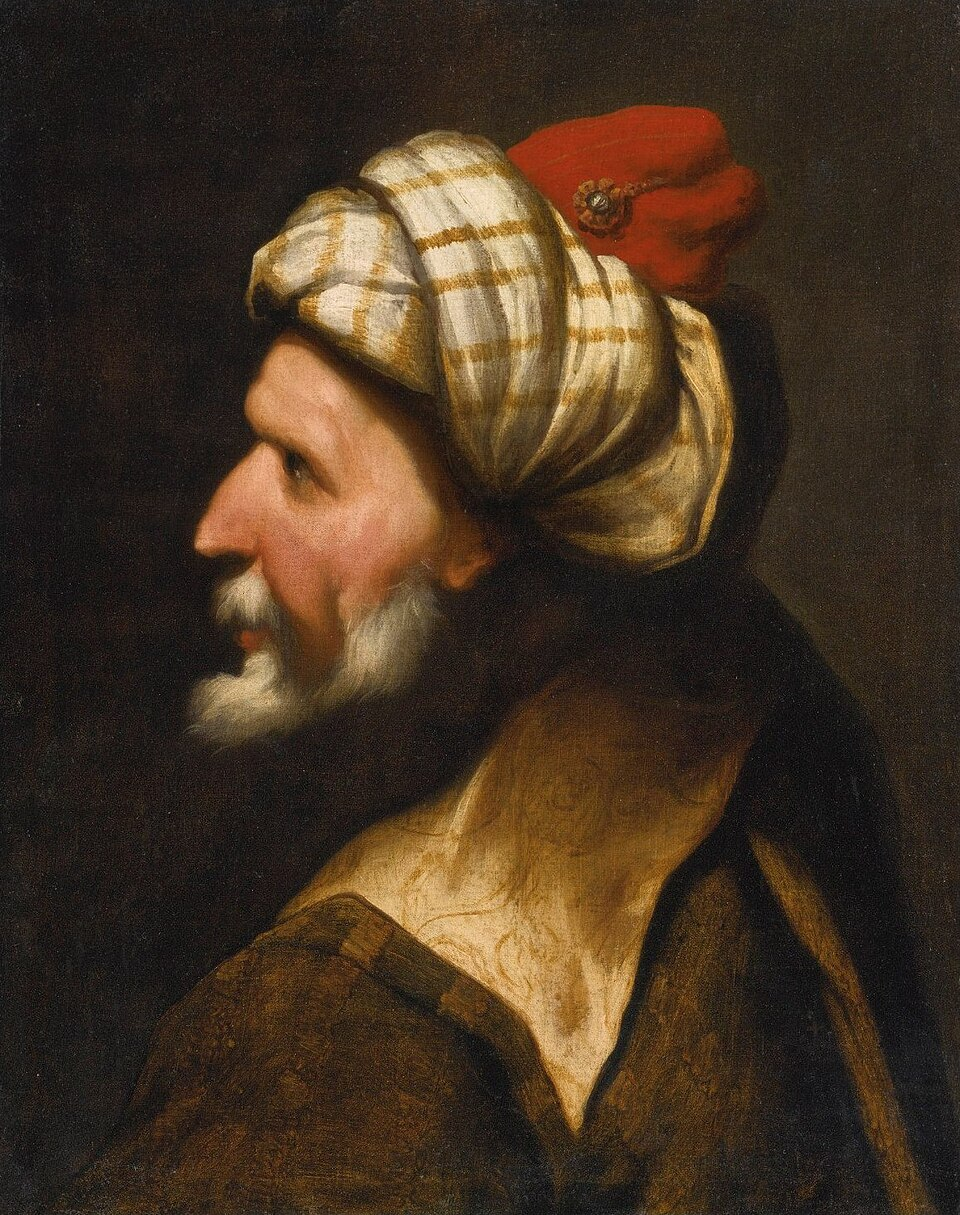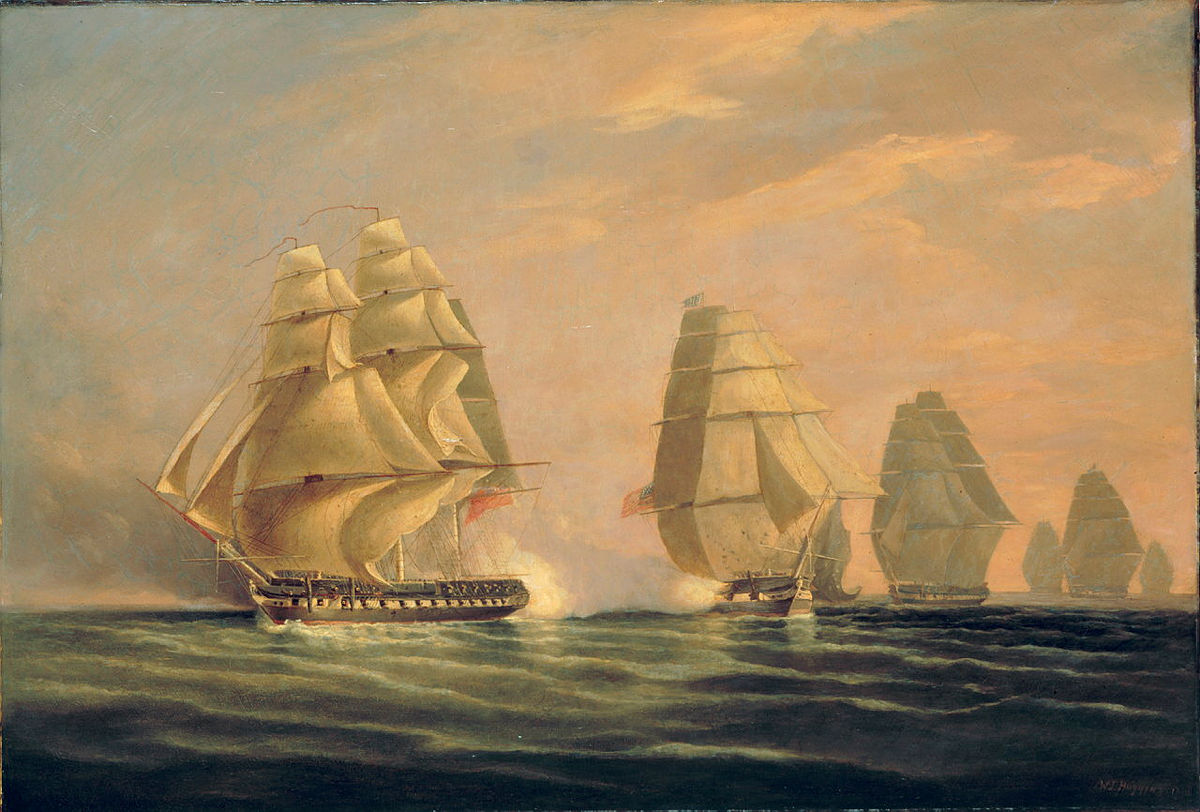Early American Conflicts Essay
Early American Conflicts | Essay
Adapted from the Bill of Rights Institute’s Presidents and the Constitution War in the Early Republic Activity.
Option A
- Lexile: 1130
- Word Count: 342
- Vocabulary: Barbary, impressment, plunder, stalemate, enrage, clamor, neutrality, blockade, provisional
The Constitution divides war powers between the president and Congress. Congress declares war, raises the military, and funds it, while the president serves as Commander in Chief. President James Madison asked Congress to declare war on Britain to begin the War of 1812. When it did so, this marked the first declared war in U.S. history. However, it was not the first foreign conflict for the young country.
Washington, Adams, and the Quasi-War
In 1793, France went to war with England. Many Americans wanted the U.S. to take sides, but President George Washington declared neutrality, sparking debate over whether this power belonged to the president or Congress.
Tensions with France escalated when it suspended U.S. trade and seized American ships. President John Adams, as “Chief Diplomat,” tried to avoid war through negotiations, but France demanded a bribe in order to even see the American diplomats. This became known as the XYZ Affair and enraged Americans, even those who were generally supportive of France. Congress expanded the navy and raised a provisional army. Though many clamored for war with France, Adams maintained peace-but lost re-election to Thomas Jefferson in 1800.
Jefferson and the Barbary Pirates
Jefferson inherited tensions with France and conflict with North African Barbary pirates, who plundered ships and held sailors for ransom. Previously, Congress had paid “tributes” to the pirates so that they wouldn’t attack American ships, but Jefferson refused. When Tripoli demanded more money and declared war, Jefferson, as Commander in Chief, sent a naval squadron to protect American lives and property in the area. Later, because Congress had never officially declared war, he asked Congress for authorization to expand military action beyond defense and into attacks, and successfully subduing the pirates.
The First Declared War
Elected in 1808, James Madison faced mounting tensions with Britain over trade blockades, the impressment of American sailors, and British support of Native resistance to U.S. expansion. Madison saw two choices: war or submission.
In 1812, he asked Congress for a declaration of war, stating that whether to “oppose force to force” was a decision that the Constitution wisely left to the legislature. Congress approved, and Madison was authorized to use the military in its full capacities for defense and attack. The war was unpopular with many, especially those in New England, and poorly managed, ending in a stalemate in 1815. However, it affirmed U.S. independence, leading some to call the War of 1812 “the second revolutionary war.”
Option B
- Lexile: 890
- Word Count: 297
- Vocabulary: bribe, neutral, sailor, pirate, revolutionary, expansion, split, prisoner, navy, block
The Constitution splits war power between the president and Congress. Congress declares war and gives money for military forces, while the president is the leader of all forces. In 1812, President James Madison asked Congress to declare war on England. This was the first declared war in U.S. history.
Washington, Adams, and the Quasi-War
In 1793, France started a war with England. Many Americans wanted to choose sides, but President George Washington said America would stay neutral. This started a debate over if the Constitution gives the president or Congress the authority to declare neutrality.
When France later took American ships and stopped U.S. trade, President John Adams tried to make peace through talks. But France asked for a bribe, which made Americans angry. Congress built more navy ships and got an army ready. Though many wanted war, Adams made peace. But he lost the next election to Thomas Jefferson in 1800.
Jefferson and the Barbary Pirates
Jefferson had to deal with pirates from North Africa who stole from ships and took sailors prisoner. Before, Congress had paid money to the pirates so that they wouldn’t attack American ships, but Jefferson did not want to do that anymore. When the pirates wanted more money and declared war, Jefferson sent navy ships to defend American ships as commander in chief. Later, he asked Congress to pass a measure that would give him further power to take the offensive against the pirates. His plan worked, and the pirates were stopped.
The First Declared War
James Madison became president in 1808. England was blocking American trade, taking American sailors, and helping Native Americans fight against U.S. expansion. Madison thought America had to fight in order to defend itself.
In 1812, he asked Congress to declare war. Congress said yes, and Madison could use all military forces. The war wasn’t popular and wasn’t fought well. It ended in 1815 with neither side winning. But it showed that America was truly independent, and some called it “the second revolutionary war.”
Images:

Della Vecchia, Pietro. Profile of a Barbary Pirate, Traditionally Identified as Barbarossa.
A 17th-century oil painting that reflects European portrayals of North African pirates from a region called “Barbary” on the Mediterranean Sea.

Huggins, William John. The First Naval Action in the War of 1812. 1816. Watercolor. Public domain.
The First Naval Action in the War of 1812 by William John Huggins, painted in 1816, portrays the first encounter between British and American ships in the War of 1812